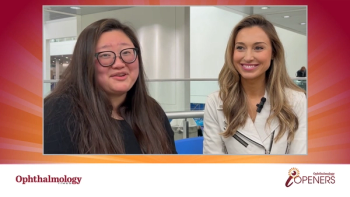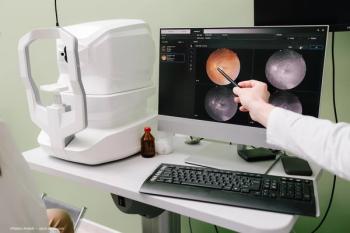
The Magnificent 7: How many glaucoma medications are too many?
Finding the sweet spot surrounding the number of anti-glaucoma medications translates to a balancing act with focus on individual patient needs.
This article was reviewed by Janet B. Serle, MD
Ophthalmologists have the luxury of choosing from among seven current IOP-lowering medications, with doses that range from one to four times daily. The list includes prostaglandin analogs (PGAs), rho kinase inhibitors, beta-blockers, alpha-agonists, carbonic anhydrase inhibitors (CAIs), miotics, and non-selective adrenergic agonists.
This may well be an embarrassment of riches, with the ready availability of these options raising interesting questions and prescribing quandaries for physicians.
Likely the most important question is what is the optimal tolerated, effective, and reasonable IOP-lowering regimen? Janet B. Serle, MD, pointed out during a presentation at the 2019 American Academy of Ophthalmology annual meeting.
“We have a great deal of evidence-based facts about medical therapy,” she said. “We know that if a second, third, fourth, or more medications are added to a regimen, typically effective IOP reductions are not anticipated/obtained compared with when those medications are used as first-line interventions.”
Dr. Serle, professor emeritus, Icahn School of Medicine at Mount Sinai, New York, noted that the duration of efficacy of a second, third, fourth, or more medications may be less and the efficacy tends to wane over time.
Other factors come into play that reduce patient compliance, such as regimen complexity, cost, side effects, age, physical infirmity, changes in mental status, education level, and health literacy. The nighttime efficacy is also less with some drugs, resulting in possible glaucoma progression. Inter-day and intra-day IOP fluctuations also can result in progression.
A study has suggested that combination therapy may actually reduce fluctuations. Chronic medical therapy causes changes in conjunctival tissue that may negatively impact incisional surgery, and chronic drug dosing contributes to ocular surface disease, Dr. Serle enumerated.
Prescribing habits
While numerous caveats are related to the decisions to prescribe IOP-lowering medications, Dr. Serle noted that the question is what actually has been happening in medical practice.
A look-back at treatment practices shows a steady rise in the average numbers of medications prescribed over the past three decades. The average number in the Advanced Glaucoma Intervention Study in 1992 indicated that 2.7 drugs were prescribed.
This was prior to the advent of the PGAs, topical CAIs, and adrenergic agonists. When those drugs became commercially available, the average number of medications rose to 3.0 and 3.2 in major studies from the late 1990s to 2004.
By 2006, the average was 3.4, and the current regimens reported in peer review articles have included 3.6 medications; CME case reports have reported use of three to five medications in individual patients, Dr. Serle reported.
Adding a medication
A few studies have provided positive evidence supporting the use of third and fourth drugs in the short term.
A small prospective Japanese study of ripasudil (Glanatec, Kowa Company, Ltd.), a rho kinase inhibitor with twice daily dosing, included 39 patients with a baseline of 3.6 medications; the study found that after 12 months of ripasudil treatment, there was an additional mean 15.5% decrease in IOP in more than two-thirds of patients.
A three-month retrospective study of netarsudil (Rhopressa, Aerie Pharmaceuticals) a rho kinase inhibitor approved in the United States, found an additional 3.9 mmHg IOP decrease in 172 eyes, that was similar in patients regardless of the number of baseline medications.
A retrospective evaluation of brimonidine (Alphagan, Allergan) in 53 eyes also showed an additional 20% IOP decrease in 53% of patients after 12 months who had been receiving a mean of three baseline medications.
Many prospective studies of latanoprost (Xalatan and Pharmacia, Upjohn) have shown a positive additive effect of the drug, with IOP decreases ranging from more than 20% to 36% in patients taking multiple baseline medications, Dr. Serle reported.
Fixed-dose combinations
Fixed-dose combinations and co-drugs have changed the playing field in the past two years because, as Dr. Serle pointed out, they address all the caveats mentioned previously. To date, few studies of these drugs have been undertaken.
The question associated with these drugs, which include the co-drug nitric oxide-donating PGA latanoprostene bunod (Vyzulta, Bausch + Lomb), and the FDC netarsudil/latanoprost (Rocklatan, Aerie Pharmaceuticals), brinzolamide/brimonidine (Simbrinza, Alcon), topical CAI/beta-blocker (Cosopt, Merck Sharp & Dohme), and PGA/beta blocker (Xalacom, Pfizer), is whether the numbers of medications, bottles, or daily eyedrops should be counted, according to Dr. Serle.
Real-world dosing
Dr. Serle explained that when using the fixed-dose combinations, five medications can be instilled with four daily drop instillations, with only three bottles compared with previously when using pilocarpine alone, which was instilled four times daily. So, the consideration here is the level of individual patient tolerance for an ambitious regimen.
Patients can, she believes, instill three, four, or more topical medications daily, and in her practice some do so “reliably and comfortably.”
If issues arise, the options include simplification of regimens or moving on to laser or surgery, she noted and pointed to a few red flags indicating when something other than medical therapy may be entertained: the promise of better performance by the patient, IOP variability from visit to visit, running out of or not filling prescriptions, and poor visit compliance.
Medical therapy vs. surgery
All things considered, the waters can be murky when it comes to deciding the number of medications to use in individual patients to delay surgery, Dr. Serle explained. Some data indicate that adding more medications results in additional IOP lowering, which may delay surgery in some patients.
Regarding the question about how much medication is too much, unfortunately, there is no magic number of medications or daily drops.
“One patient’s sweet spot is another patient’s treatment burden,” she said, and the maximal number of medications that is effective, tolerated, and complied with varies markedly. The most efficacious and best-tolerated combinations of medications are unlikely to work for all patients. The bottom line seems to be highly individualized care.
“Make sure the target IOP is achieved, the disease is stable, and the patient is adhering to the regimen. These factors translate to the correct number of drop instillations daily,” Dr. Serle concluded.
Janet B. Serle, MDE: [email protected]
Dr. Serle is a consultant to Aerie Pharmaceuticals, Inc., Allergan, and Bausch + Lomb, receives grant support from Ocular Therapeutix and Allergan, and receives lecture fees from Aerie Pharmaceuticals, and Bausch + Lomb. She reported equity ownership in Aerie Pharmaceuticals.
Newsletter
Don’t miss out—get Ophthalmology Times updates on the latest clinical advancements and expert interviews, straight to your inbox.













































